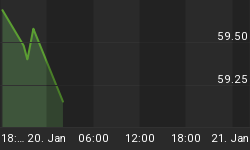As we mentioned Tuesday, the reaction to Wednesday's Fed statement is important to the market's intermediate-term direction. However, Apple's (AAPL) strong earnings have provided investors with a reason to step up to the buyer's plate. From Bloomberg:
Apple Inc. (AAPL) profit almost doubled last quarter, reflecting robust demand for the iPhone in China and purchases of a new version of the iPad, allaying the growth concerns that sliced shares 12 percent in two weeks.
Since Europe continues to be the possible "fun sponge" for the bullish party, and Germany tends to pay the uncomfortable European clean-up tabs, the German DAX Index has served as a good proxy for the tolerance for risk assets. Germany has had a strong start to trading on Wednesday. Later in this article, we review the longer-term technical backdrop for the German stock market.
Picking market tops and bottoms is difficult at best. It is better to think in terms of a probabilistic bottom or top. One way to help discern if it is probable for a market to move higher is to look at long-, intermediate-, and short-term trendlines on both an absolute and relative basis.
When reviewing the charts below ask yourself, "Does this market seem to be at a logical point where a reversal could take place?" If the answer is "yes", then we become more open to a possible buying opportunity. A few weeks ago we identified 1,363 as a possible point of inflection for stocks. The S&P 500 has been testing 1,363 for two weeks. On April 10, the S&P 500 closed at 1,358, which thus far has represented the lowest close during the current pullback. While we want to see some real conviction from buyers, the chart below seems to have a reasonable probability of producing a reversal to the upside.

Even if the chart above fails to produce a sustainable bullish reversal, it is still useful since a clear break of 1,363 would send up warning flares. The markets have been weak from numerous perspectives in recent weeks. We will be looking for more than a dead cat bounce at 1,363. A bullish turn in intermediate-term market breadth, as measured by the Summation Index, would take us past dead cat bounce territory. The Summation Index has yet to turn up as of Tuesday's close.
Another good way to answer the question of a logical reversal point is to examine recent market leaders. Two market leaders since the October low have been financials (XLF) and homebuilders. The chart below shows the performance of financials relative to the S&P 500. Financials held at the upward-sloping pink trendlines in December, February, and March. Also notice XLF:SPY is testing the breakout point from early March. If the retest is successful, it would be a good sign for all risk assets. Conversely, if the retest fails, it would be a fairly significant yellow flag for global stocks.

The same concepts described for financials above also apply to homebuilders (XHB) below. Logical points of probable reversal exist on the relative chart below (XHB:SPY) and the absolute chart (XHB) that follows. We own financials, which are highly correlated to homebuilders.


The S&P 500 ETF (SPY) closed near the lower end of a trend channel on Tuesday. Like all the charts presented here, we can gain valuable information if SPY holds above or moves below $137.00.

Whenever you are reviewing charts with trendlines that have been drawn manually by a human being, you have to factor in author bias, meaning the author can see what they want to see. Understanding that caveat, the weekly and monthly charts of the German DAX Index below seem to be at probable or fairly logical points of long-term support.


While things were looking shaky earlier this week, we noted the CCM Market Risk Model had not retreated to a point that was overly concerning relative to historical norms (as of Monday's close). With the Fed on tap and a weak durable goods report, we need the market to check off more of the technical boxes described on April 17. However, the charts above tells us to be open to another push higher in risk assets should some sustainable conviction surface from buyers.
















